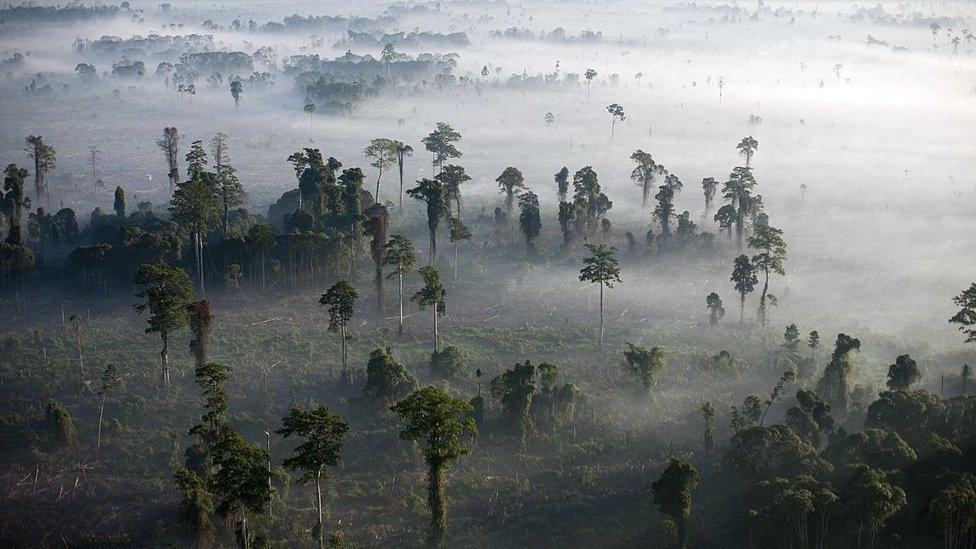Human-made objects to outweigh living things
- Published
- comments

Buildings and roads make up the majority of human-made mass
Scientists say the weight of human-made objects will likely exceed that of living things by the end of the year.
In other words, the combined weight of all the plastic, bricks, concrete and other things we've made in the world will outweigh all animals and plants on the planet for the first time.
The estimated weight of human-made objects is about one teratonne.
For every person in the world, more than their body weight in stuff is now being produced each week.
These astonishing figures have been calculated by a team at the Weizmann Institute of Sciences in Rehovot, Israel, to show how our species is transforming the Earth.
"The significance is symbolic in the sense that it tells us something about the major role that humanity now plays in shaping the world and the state of the Earth around us," Dr Ron Milo, who led the research, told BBC News.
"It is a reason for all of us to ponder our role, how much consumption we do and how can we try to get a better balance between the living world and humanity."

Since the first agricultural revolution, humans have halved plant biomass
The scientists worked out the combined mass of all human-made stuff from 1900 to the present day and compared this with the weight of all the living things on the planet (known as biomass).
From plastic bottles to the bricks and concretes we use for buildings and roads, the weight of all the things we produce has been doubling every 20 years recently.
At the same time, the weight of living things has been falling, mainly due to the loss of plant life in forests and natural spaces.
The scientists knew at some point we would reach a crossover point. And according to their estimates, 2020 is the year when human-made mass from the likes of roads, buildings and machines, will likely overtake that of all the living things in the world.
The exact timing is sensitive to definitions, so there may be some variability in the estimates by a few years either side, they say.
But if we continue as we are, by 2040, the weight of all human-made stuff will have almost tripled from 1.1 teratonnes (1,100,000,000,000 tonnes) to about three teratonnes.

Buildings and roads make up the majority of human-made mass
This means humanity is now producing stuff at a rate of more than 30 gigatonnes (30,000,000,000 tonnes) per year.
The research, published in Nature, is further evidence that we have entered a new geological age, known as the Anthropocene, where humanity's impacts on Earth will be visible in sediments and rocks millions of years into the future.
The formal start date could be the 1950s, which marks the beginning of the "Great Acceleration", when the human population and its consumption patterns suddenly speeded up.
It coincides with the spread of ubiquitous materials, such as aluminium, concrete and plastic.
Follow Helen on Twitter, external.
Related topics
- Published4 December 2017
- Published8 January 2016